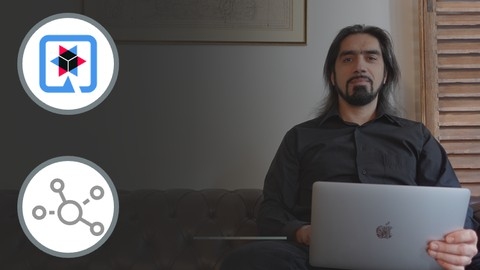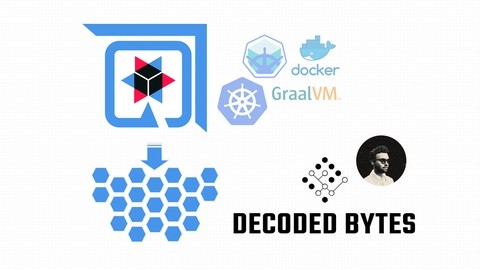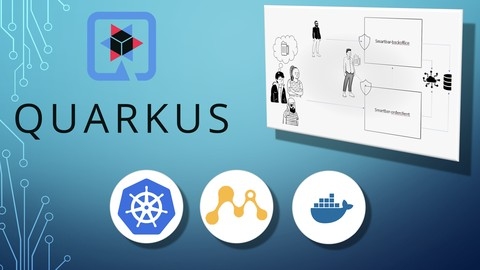Quarkus is a Java framework designed for building fast and efficient applications, particularly microservices.
Its ability to create small, quickly-starting applications makes it ideal for cloud-native deployments and serverless environments.
By learning Quarkus, you can develop high-performing, scalable applications that are optimized for modern infrastructure, boosting your skills as a Java developer and opening doors to new opportunities.
Finding a good Quarkus course, however, can be tricky.
You need a course that covers the fundamentals, offers practical exercises, and keeps up-to-date with the rapidly evolving Quarkus ecosystem.
With so many courses available online, it’s easy to feel overwhelmed and unsure where to begin your Quarkus journey.
For the best Quarkus course overall on Udemy, we recommend Starting with Quarkus.
This course provides a thorough introduction to the framework, starting with the basics and progressing to more advanced topics like testing, configuration, and deployment.
Its hands-on approach ensures you gain practical experience building real-world Quarkus applications.
While Starting with Quarkus is our top pick, we understand that you might be looking for something more specific.
We’ve reviewed other popular Quarkus courses available on Udemy, catering to different learning styles and focusing on various aspects of the framework.
So, keep reading to discover other options that may better suit your individual needs and learning goals.
Starting with Quarkus
This course takes you on a practical journey into building fast and efficient Java applications with Quarkus.
You start with the basics, learning what Quarkus is and why its speed and small size make it a popular choice.
You quickly jump into hands-on work, setting up your development environment and creating your first Quarkus application.
This initial setup gives you a solid foundation for the rest of the course.
You then develop a simple “Book” REST endpoint, a crucial element for applications that communicate with other systems.
You learn about “beans,” a key part of Quarkus, and how to use them.
This practical experience builds your skills and confidence in working with Quarkus.
Testing is essential for any application, so you’ll learn how to thoroughly test your REST endpoint, ensuring it works correctly.
Next, you dive into configuring your Quarkus application.
You discover how to inject configurations, a technique that streamlines managing your application’s settings.
You also learn about profiles, allowing you to easily configure your application for different environments, like testing and production.
This skill is invaluable for real-world deployments.
Finally, you explore packaging and deploying your application.
You learn to create both executable JAR files and native executables, with the latter offering significant performance advantages.
You even learn how to containerize these executables, preparing them for cloud platforms like Kubernetes.
This final stage ensures you can deploy your applications efficiently and effectively.
You finish the course equipped with the practical skills to confidently build, test, and deploy your own Quarkus applications.
Building Microservices with Quarkus
If you’re looking to master microservices with Quarkus, this course offers a practical, hands-on learning experience.
You’ll begin with the fundamentals of microservices and the MicroProfile standard, laying a solid groundwork for the rest of the course.
This introduction sets the stage for understanding why microservices are important for modern applications and how MicroProfile helps streamline their development in Java.
You’ll then prepare your development environment and bootstrap your first microservice using Quarkus, ensuring you have a working foundation right from the start.
You’ll then dive into building two microservices: a “Number” microservice and a “Book” microservice.
Through these projects, you’ll gain practical experience with creating REST endpoints, customizing JSON output for specific needs, and writing clear documentation.
You’ll also learn how to configure these services correctly and implement robust testing strategies using practical, hands-on activities, ensuring your microservices are reliable and production-ready.
This provides valuable experience with essential Quarkus features and best practices.
The course then moves into inter-service communication, a crucial aspect of any microservices architecture.
You’ll discover how to make one microservice call another, a fundamental skill for building interconnected applications.
More importantly, you’ll explore techniques for handling communication failures and ensuring your application remains resilient even when things go wrong.
You’ll also use mocking techniques to simulate different scenarios and strengthen the reliability of your microservices.
Finally, you’ll learn how to prepare your microservices for deployment.
You’ll build native Linux executables using Quarkus, optimizing them for performance in production.
You’ll then containerize these executables using Docker, a standard practice in modern software deployment.
This hands-on experience with Docker allows you to package your microservices efficiently and run them seamlessly in Docker containers, preparing you for real-world deployment scenarios.
Accessing Relational Databases with Quarkus
You’ll begin by grasping the basics of Quarkus and the core idea of Object-Relational Mapping (ORM).
ORM helps you connect your Java code to databases smoothly.
You’ll then jump into building a real application, setting up your workspace, and getting your project started.
Next, you’ll discover how to model data using simple Java objects (POJOs), JPA Entities, and the efficient Panache Entities.
You’ll explore and compare different ways to access databases, like JDBC, JPA, and Panache, understanding their pros and cons.
You’ll also learn how to manage these entities effectively with JPA Entity Manager and Panache Active Record and Repositories.
You’ll delve into mapping—connecting your Java objects to database tables—using both annotations and XML, handling tricky situations like inheritance and relationships.
You’ll then tackle querying data, learning different query languages and the power of Panache for quick data retrieval.
You’ll learn how to expose data through REST endpoints for building web services.
The course covers handling database transactions and presenting your data beautifully with Qute templates.
You’ll even learn to enhance these templates and combine them with Panache for a better workflow.
Finally, you’ll discover how to launch your application in different modes – development, testing, and production – preparing you to deploy your finished product successfully.
You’ll execute your application using profiles for development, testing, and production environments.
You’ll learn about default and custom Panache queries, and how to visualize your data with Qute templates, beautifying them and mixing them with Panache.
K8s Native Java Microservices on Quarkus - 2022 Edition
You start with the fundamentals of Java microservices, MicroProfile, and the Quarkus runtime.
You’ll build your first “Hello World” microservice to grasp the core concepts.
You’ll learn how to use the Quarkus toolkit and create native images for faster application startup.
The course then introduces you to Minikube, a single-node Kubernetes distribution perfect for learning K8s deployments.
You’ll then build a project service with various REST endpoints (GET, POST, PUT, and DELETE) and learn how to test them effectively using JUnit and RestAssured.
The course guides you through data persistence using databases like H2 for development and how to connect to external databases.
You’ll learn best practices like segregating test and production databases.
You’ll manage configurations, understand their precedence, and use ConfigMapping to fetch specific values.
You’ll also deploy your database setups and configurations to your Minikube environment.
The course then dives into communication between microservices using RestClient, a critical skill in building distributed systems.
You’ll restructure your project and create a new Budget API, connecting it to your existing project service.
You’ll discover how to mock services for efficient testing.
You continue deploying to Minikube, gaining valuable hands-on Kubernetes experience.
You’ll then explore implementing health checks (liveness and readiness probes) and enabling metrics to monitor the health and performance of your application.
You’ll use these skills to deploy a fully functional multi-service application to Kubernetes.
Cloud-native Microservices with Quarkus
This Quarkus course offers a practical, hands-on approach to building Java microservices.
You will develop two complete microservices, starting with a simple “Hello World” application and progressing to more complex features.
The instructor provides the source code on GitHub after each lesson, allowing you to learn at your own pace.
You will begin by establishing a project structure and understanding the fundamentals of Quarkus.
You will then learn how to design and implement REST APIs, exploring both JAX-RS classic and reactive approaches, and understanding the nuances of blocking versus non-blocking operations.
You will dive into database interactions using Hibernate ORM and Panache, implementing CRUD operations and mastering essential concepts like data modeling, constraints, custom queries, and pagination.
You will also gain proficiency in configuration management using YAML, understanding the differences between build and runtime properties, and leveraging profiles for various environments.
The course emphasizes security, guiding you through different authentication mechanisms like basic authentication, form-based authentication, and OpenID Connect.
You will learn how to secure your APIs and choose the best authentication method for your specific needs.
The course covers advanced topics such as building native images with GraalVM and Docker for production deployment.
You will learn how to use the Quarkus CLI for managing extensions, project updates, migrations, and even creating new services.
You will also explore inter-service communication using various HTTP clients and implementing fault tolerance mechanisms like retries, timeouts, fallbacks, and circuit breakers to ensure your microservices are robust and reliable.
Throughout the course, you will work with technologies like Eclipse MicroProfile, SmallRye, and Eclipse Vert.x, gaining valuable experience in cloud-native development best practices.





